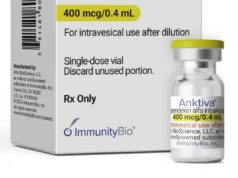After spending three years trying to find a biomarker for depression and anxiety by measuring brain waves, Alphabet’s moonshot subsidiary was ultimately unsuccessful.
Researchers at Google’s sister company, X, had sought to find a biomarker for depression, similar to how blood glucose levels are measured to manage diabetes. They decided to focus on electroencephalogram (EEG) tests, a way of measuring the brain’s electrical activity, based on other studies that showed certain patterns of electrical activity in the brain corresponded with depression symptoms.
But, like many other things involving the brain, it proved to be complicated.
“We didn’t succeed in our original goal of finding a single biomarker for depression and anxiety. It is unlikely that one exists, given the complexity of mental health,” Obi Felten, whose job at X is to bring projects from the lab into the real world, wrote in a blog post. “Yet there’s no question that there is a huge opportunity for technology to enable better measurement.”
Currently, depression and anxiety are assessed using the PHQ-9 and the GAD-7, two questionnaires that ask patients about their recent symptoms. Scientists at X hoped to use EEG tests as a diagnostic tool.
As part of the secretive effort, dubbed “Project Amber,” they worked to make EEG data easier to collect and interpret, so the system could be used outside of a lab setting. The company developed a portable EEG headset that looks like a swim cap. They also worked with researchers at DeepMind to use machine learning to “denoise” EEG signals, making it easier to determine which portions are relevant.
Ultimately, the idea got a lukewarm reception from clinicians, Felten wrote. Psychiatrists and clinical psychologists were confident in their ability to diagnose using clinical interviews, and counselors and social workers typically don’t do diagnosis in their practice. Some patients also weren’t fond of the idea of being labelled by a machine.
There was more interest in using EEG for ongoing monitoring, such as to measure a patient’s mental health over time or to learn what happens between visits.
Other companies are taking different approaches in searching for ways to measure mental health. Pear Therapeutics, which has FDA-cleared digital therapeutics for insomnia and substance use disorder, licensed voice digital biomarkers from Winterlight Labs earlier this year, which it hopes to develop and clinically validate.
Mental health startup Mindstrong is using data on the way people use their smartphones, such as how they scroll or tap on a touchscreen, to try to measure brain function.
X made its hardware designs and the code for its EEG system available to the public, should others want to use them.
But beyond the technology, the most pressing concern for most patients is simply access. A survey conducted by the National Alliance on Mental Illness in 2016 found that more than half of respondents contacted psychiatrists who were not accepting new patients or who did not accept their insurance. A third of them reported difficulty finding any mental health prescriber who would accept their insurance.
Photo credit: mrspopman, Getty Images








